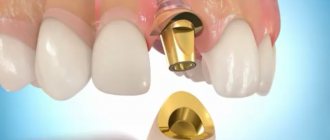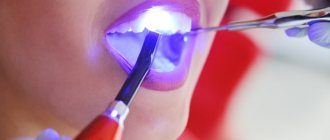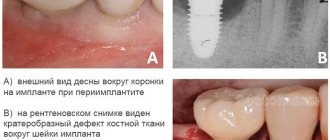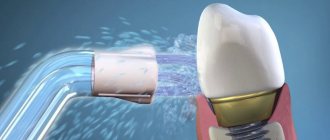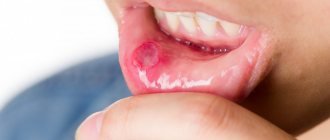Modern dental prosthetics Minsk – one of the most popular dental procedures. Loss of teeth and, as a result, malocclusion, the development of serious diseases of the oral cavity and the whole body are quite common. But if a couple of centuries ago there was no fight against this, today doctors are already offering a number of technologies for restoring the dentition.
Metal-ceramic dental are durable, easy to use and reliable, and they also look like real teeth. That is why many patients prefer to restore their teeth using metal-ceramic prosthetics. But in order to maintain the natural appearance of the crowns, it is necessary to properly care for them. The Family Dentistry Medical Center offers you to familiarize yourself with the list of basic recommendations for caring for metal-ceramic teeth.
Maintaining good oral hygiene
Artificial teeth, just like real teeth, need regular brushing in the morning and evening, and after each meal. If it is not possible to brush your teeth at one time or another, simply rinse your mouth with clean water and use a irrigator. Dentures should be cleaned vertically from the gums to the edges of the teeth. For these purposes, a regular toothbrush, or even one with soft bristles, is suitable, but it is better to consult your doctor about toothpaste. It is also advisable to use mouthwash and dental floss to thoroughly clean the spaces between your teeth. But in addition to home care, you should not refuse professional services: dental cleaning, removal of accumulated plaque and tartar. It is recommended to visit the dentist 2 times a year.
What are the dangers of improper care after prosthetics?
Bad breath and visible plaque are only superficial manifestations of poor hygiene. In fact, the consequences are much more serious:
- Plaque, accumulating near the surface of the gums, contributes to the formation of tartar.
- Tartar, in turn, is a breeding ground for bacteria.
- The waste products of harmful microorganisms have a destructive effect on the natural tissues of teeth and soft tissues, and provoke inflammation of the gums.
- When the gum becomes inflamed, its structure becomes loose. Such gums are not able to protect the cervical area of the teeth.
- If left untreated, seemingly harmless inflammation of the gums leads to much more serious consequences - periodontitis, the formation of gum pockets.
Simply put, dental hygiene and oral health are inextricably linked.
Rejection of bad habits
Smoking negatively affects the health of our body, but primarily affects our teeth. As a result, artificial crowns gradually begin to accumulate plaque and change their shade. A similar reaction is caused by excessive consumption of coffee, tea and drinks containing dyes, so you should monitor not only oral hygiene, but also daily habits, especially for those who like to use their teeth for other purposes (opening bottles, chewing off hard objects, etc.). d.).
Stages of treatment: how to prepare, install a crown on a tooth
Below we will analyze in detail each of the stages of prosthetics with crowns, and if you want to get advice directly from a specialist, call and make an appointment with the orthopedic doctors of our dental clinic in St. Petersburg - “Unident”. An initial consultation with an orthopedist at our clinic is provided free of charge!
Inspection and diagnostics
The treatment process begins with a visit to the office of an orthopedic dentist.
The specialist will carefully examine the patient’s oral cavity, identify existing problems, and, if necessary, prescribe a number of additional diagnostic measures. Based on the information collected from the clinical case, the orthopedist will draw up a detailed treatment plan and also offer the patient all possible prosthetic options. A well-designed treatment plan necessarily takes into account not only the installation of a dental crown, but also additional procedures:
- Removal of teeth, restoration and treatment of which is impossible for objective reasons;
- Preliminary treatment of diagnosed diseases of teeth and gums;
- Treatment of tooth canals and their filling (carried out when deciding to depulp a tooth before installing a crown);
- Professional oral hygiene. Sanitation of the oral cavity before prosthetics must be carried out to completely remove hard and soft plaque from the surface of the teeth. The event will allow you to most accurately select the crown to match the color of the patient’s natural tooth enamel, and will also have a positive impact on the quality of treatment.
The preparation of a treatment plan is completed by selecting a specific type of dental crown, after which the total cost of prosthetics is calculated and the timing of its implementation is specified.
Preparatory stage
The duration of the preparatory stage depends on what procedures will need to be carried out before prosthetics to ensure a high-quality and durable result. Below we will consider in detail all the possible stages of preparation for dental prosthetics with crowns.
Depulpation
A few years ago, before installing crowns, teeth were depulped without fail.
But modern orthopedists, if the clinical case allows, strive to keep teeth viable and do without removing the nerve. A tooth with preserved pulp is not deprived of adequate nutrition with minerals and nutrients, and does not acquire increased fragility. Crowns installed on living teeth last longer, but unfortunately, it is not always possible to refuse pulp removal. Most often, the front teeth are depulped, but the chewing dental units are kept alive. They have a fairly large area of the natural crown, in them the distance from the enamel to the pulp chamber is much greater, and therefore the risk of nerve bundle burns when installing a crown will be minimal.
The decision on the advisability of preliminary pulp removal is also made based on the number of roots, which may vary for different teeth. If you plan to install a crown on a single-rooted tooth, the depulpation procedure is mandatory. When treating single-rooted teeth, the risk of pulp burn is too high, and thermal damage to the sensitive nerve bundle is fraught with the occurrence of an inflammatory process under the installed crown. To prevent such negative consequences, single-rooted teeth are depulped, the canal cavities are treated with antiseptic agents and filled with gutta-percha.
Treatment of diseases of teeth and gums
If, during a visual examination of the oral cavity, the doctor discovers caries, signs of the development of an inflammatory process - these conditions must be eliminated before installing crowns.
If the tooth is significantly destroyed by caries, the doctor removes the affected tissue and restores the crown part by installing a durable filling. Pulpitis and periodontitis are treated according to a more complex scheme, which includes treatment of dental canals and filling them. A high-quality and durable filling must be placed on the tooth, otherwise it may fall out, and the installed crown will fall out along with it. In case of severe destruction of a dental unit, its coronal part can be restored in different ways:
- Installing a seal on the pin. A pin is a special structure in the form of a rod, which is inserted into the root canal of the tooth and acts as a reliable support for the filling;
- Stump tab. Inlays for dental restoration are made in a dental laboratory and are installed, like a pin in a canal, but are also fixed in the crown of the tooth.
If a tooth is severely damaged, it is recommended to restore it with an inlay, which is considered more reliable and durable than a conventional filling or installation of a filling on a pin.
Preparatory activities are completed with professional oral hygiene. Sanitation is necessary for the complete and high-quality elimination of dental plaque, which is a favorable environment for the proliferation of pathogenic organisms, in addition, the procedure will allow you to accurately select the color of the crown for installation so that it matches as closely as possible the shade of the natural enamel of the patient’s teeth.
Preparation
Preparation or grinding of teeth is a procedure that the doctor performs before taking impressions.
During the preparation, the tooth enamel will be ground down to the thickness of the future crown. During the grinding process, a drill is used: with its help, the tooth is given a certain shape that can provide the most durable fixation to the installed crown. If living, non-pulp teeth are subjected to preparation, the procedure can be very unpleasant and painful for the patient, and therefore local anesthesia is used before it is performed. The thickness of the enamel removal will depend on the type of crown that will be subsequently placed on the prepared tooth. A maximum of natural tissue is removed from the tooth to install ceramic and metal-ceramic crowns; the enamel is ground down to a minimum before prosthetics with cast crowns.
After the tooth has been prepared, a stump remains, from which the doctor will take impressions to produce crowns.
Laboratory stage
An impression is taken from the ground teeth. To obtain a high-quality, anatomically accurate impression of teeth, a specialized highly elastic mass is used to produce a crown. Using impressions, a dental technician in the laboratory will make a plaster model of the patient’s teeth, which will be used to make crowns for further installation. Dental crowns can be made from a variety of materials - alloys of precious and non-precious metals, ceramics, zirconium dioxide, metal ceramics. The type of crowns for installation is selected based on the characteristics of a specific clinical situation, the patient’s preferences, his wishes for the level of aesthetics, as well as financial capabilities.
The timing of its production will depend on the type of raw material from which the crown will be made. The company has been producing crowns made of ceramics and metal-ceramics for a long time. So that the patient does not have to walk with an unsightly stump during the entire period of crown production, a temporary immediate prosthesis is placed on it for this period. Temporary crowns are made of plastic, and their installation allows you to relieve the patient from psychological discomfort, as well as protect prepared and vulnerable teeth from the action of pathogenic microflora and harmful environmental factors.
Fitting and installation of dental crowns
When the dental technician makes the crown frame, the patient will be invited to the clinic for fitting.
During fitting of the frame part of the crown, the tightness of its fit to the surface of the tooth stump is assessed. If the fit is insufficient, food debris and bacteria will get under the installed crown, and all this can lead to the onset of an inflammatory process. If during fitting the crown fits perfectly on the stump, the frame is sent to the laboratory, where it will be covered with ceramic mass. The finished crown is tried on a second time and during the second fitting it will be fixed with temporary cement mortar. A second check is required to assess the quality of contact between the prosthesis and the opposing teeth, and if it goes well, the crown will be installed on the tooth using permanent cement. The process of permanently installing a crown on a tooth takes place according to the scheme described below:
- The inside of the crown is covered with a layer of cementing solution, after which the crown is put on the tooth;
- A tooth with a crown is exposed to light, which accelerates the hardening process of the cement mortar;
- All excess cement mixture is carefully removed, since it is a rather caustic substance and, if it comes into contact with soft tissue, can cause severe burns.
The treatment ends with a detailed consultation from the orthodontist on the care of the prosthesis and oral cavity after prosthetics. Compliance with the specialist’s recommendations guarantees the absence of negative side reactions and complications after crown installation.
Nutritional Features
Too cold or hot food damages tooth enamel, especially if consumed at the same time (for example: hot tea and cold jam). Metal-ceramic dental crowns are also susceptible to heat and can crack, break, or suffer a variety of other damages that require immediate replacement. You should not indulge in solid foods, for example: nuts, candies, etc.
Our teeth, whether natural or artificial, are in dire need of daily and competent care. Do not forget to follow the recommendations of your doctor, and also monitor the health of your teeth: have your teeth treated under anesthesia and do not let oral diseases ruin your life. Modern dentistry in Minsk offers treatment without fear and pain, or more precisely, treatment in your sleep. Specialists at the Family Dentistry Center use drug sedation for these purposes. While the patient is sleeping peacefully, the doctor can carry out all the necessary procedures without causing discomfort or pain. It is convenient and safe for both adult patients and children.
With proper care, high-quality cermet dentures can last more than 15 years. This is not only profitable from a financial point of view, but also practical. Monitor the health of your teeth and promptly seek help or advice from your doctor. Remember, the health and beauty of your smile depends only on you!
Content
- What are the dangers of improper crown care?
- What to do after installing crowns
- When to see a doctor
Crowns are the most popular method of restoring damaged and lost teeth. Following the rules of care will help keep your teeth beautiful and healthy after dentures. Despite the fact that the tooth is artificial, plaque continues to accumulate on it. Also, do not forget that there are neighboring living teeth and soft tissues that may be damaged due to careless handling.
PROMOTION
Installation of crowns, dental bridge
RUB 3,450
How long does it take to get used to dentures?
Dentists distinguish 3 phases of adaptation:
- The first phase is irritation
. And although doctors mean irritation of nerve receptors, the name of the phase perfectly conveys the patient’s condition. Irritation and the desire to pull out a foreign object are the 2 main feelings of the first day. A psychological attitude and any, preferably enjoyable, activity helps to overcome them. - The second phase is partial braking
.
Then comes the reward for patience and perseverance. Restoration still interferes, but not as much. Salivation decreases, nausea goes away. Cheeks and lips are less tense. Chewing function is restored. This phase takes about 5 days
. - The third phase is complete braking
. Diction is normalized, chewing no longer causes discomfort, and there is no sensation of a foreign body. The patient experiences discomfort when the jaw is not in place. Adaptation is complete.
On average, getting used to dentures takes 10-30 days.
.
The crown cannot be replaced; the entire tooth may fall off
The tooth root is firmly fixed in the bone tissue; a profile tool is used to remove the worn-out prosthesis. Therefore there is no danger. In our clinics, such manipulation is performed quickly and painlessly. You can easily remove a used denture and put a new crown on a tooth (the price depends on the type chosen).
It is wiser to find out how much it costs to put a crown on a tooth in your particular case during a visit to the dentist, when you undergo an examination and choose the material for the prosthesis. Contact the doctor on time, without waiting for fatal consequences, and he will help you save your own unit.
Psychological aspect
Often the use of a prosthesis provokes psychological discomfort in the patient: it frightens him, it seems to him that complications have already arisen, and adaptation is not going well. To prevent such a problem from arising, you need the right attitude: a person must be prepared for the difficulties that may arise in the first days. It is important to take your time and understand that the body needs to get used to new conditions. The period of complete adaptation takes up to one and a half months on average, but the most noticeable discomfort disappears after 1-2 weeks if you wear the prosthesis constantly.
To get used to a removable denture faster, orthodontists at the Dentospas clinic recommend massaging the gums. You can do it yourself, it will improve blood circulation and tissue nutrition, and improve the condition of the gums. Massage is done provided that the surface of the mucous membrane is not injured and there are no open wounds on it. At first, to speed up adaptation, you can leave the prosthesis on at night (install it again after cleaning). This is safe (the gums and tongue hardly move during sleep) and allows you to increase the time of contact of the mucous membrane with the base of the structure.
The problem with old crowns that are 10 – 20 years old or more
Many people have old orthopedic structures in their mouths: bridges, crowns.
They can be metal or combined plastic. Patients come to us who have been wearing these crowns for 20 years or more. And then there comes a time when a person is no longer satisfied with the old crowns.
- Old crowns are not functionally satisfactory, since they can no longer chew food normally, because they have already eaten, sometimes even worn down to holes.
- Old crowns are not aesthetically pleasing
, as they are worn out, blackened, grayed, and chipped.
How long will different types of crowns last, and what determines their “life”?
To have an idea of how often crowns need to be replaced, you should learn about the service life of various orthopedic structures. So let's look at this aspect from the perspective of different ways of classification.
For example, according to the period of wearing, temporary and permanent ones are distinguished. Temporary ones (made of composite or acrylic) last a very short time - from several days to 3-12 months. Permanent ones can last an average of 5-7 years. After how many years crowns are replaced depends on their service life, materials, manufacturing features, and how properly a person cares for them.
If we consider materials, then ceramic and metal-ceramic products will last up to 10 years maximum - with very good care. Zirconium dioxide or those made from lithium disilicate last longer - from 15 years. The manufacturing method is also important here - for example, zirconium dioxide structures milled with special devices can last more than 25 years. And ceramics processed using the classical method (manually) lasts about 7 years.
Fillings are now strong and better than crowns
Yes, the filling material of excellent quality is now used. Durable and stable. But installing a filling will save the tooth if the destruction is no more than 30-40%
. In other cases, the filling will not be able to provide stability to the walls of the unit. Severely crumbled teeth are often depulped, there is no tissue nutrition, and some become fragile. Therefore, under constant load, the crown of the tooth will break off at the root along with the filling. We try to preserve every unit, so we recommend installing dentures in a timely manner.
